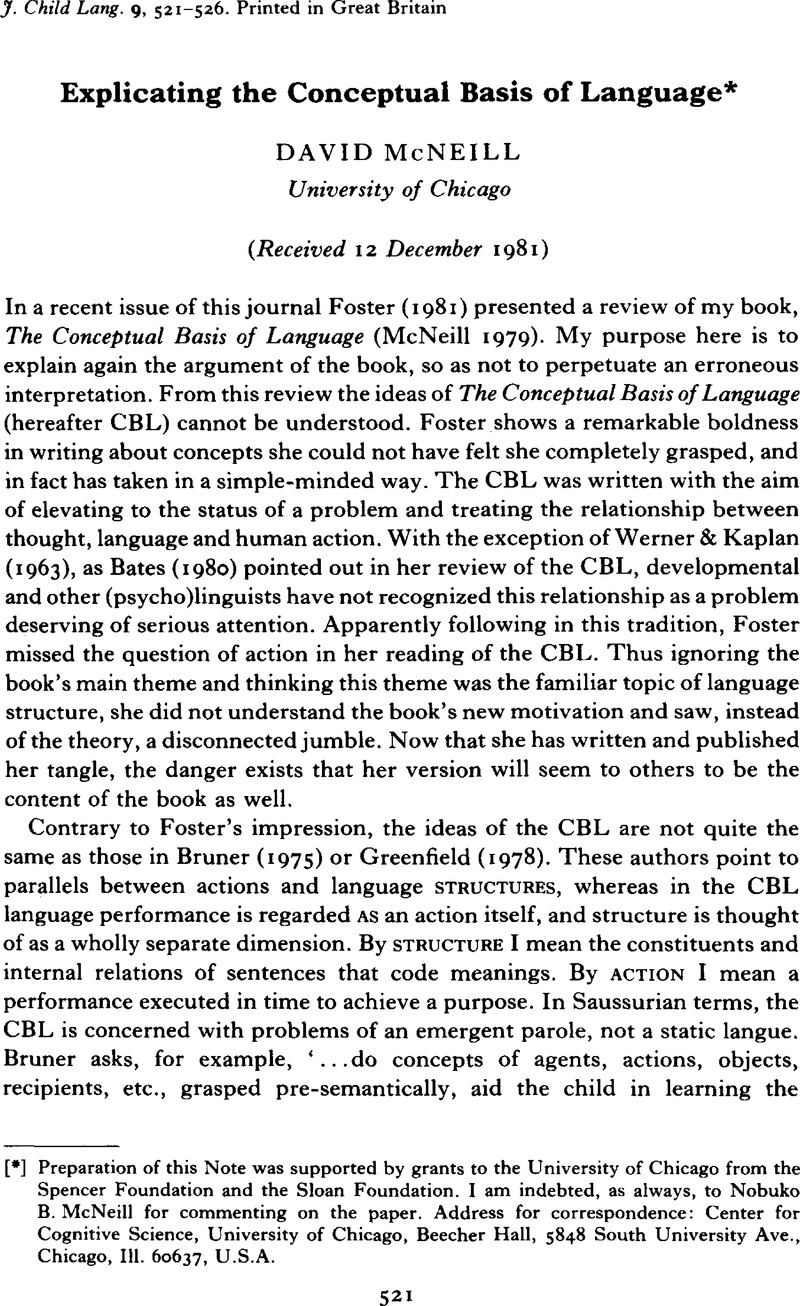No CrossRef data available.
Published online by Cambridge University Press: 26 September 2008

Preparation of this Note was supported by grants to the University of Chicago from the Spencer Foundation and the Sloan Foundation. I am indebted, as always, to Nobuko B. McNeill for commenting on the paper. Address for correspondence: Center for Cognitive Science, University of Chicago, Beecher Hall, 5848 South University Ave., Chicago, 111. 60637, U.S.A.